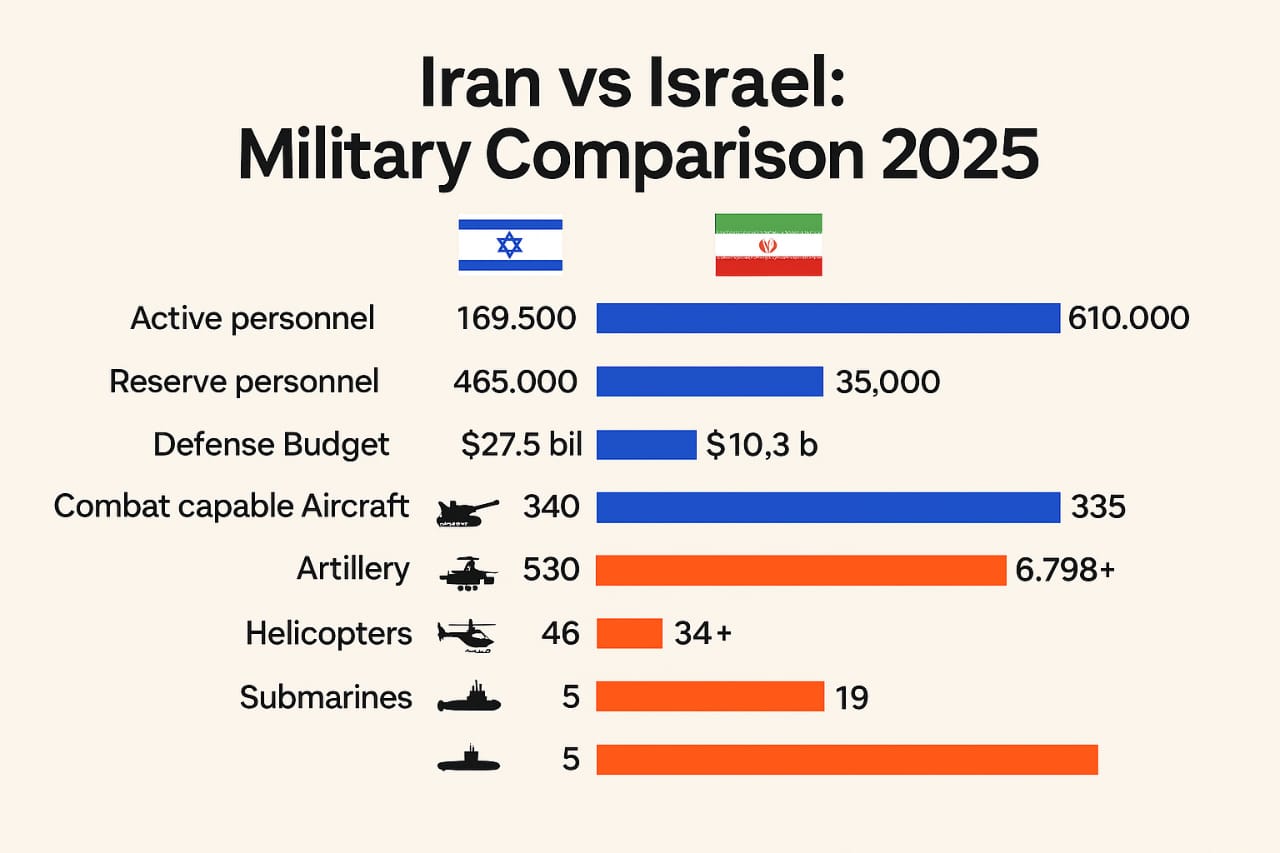Iran vs Israel Military Comparison 2025: Who Has the Edge?

Posted On: 2025-June-15
4 Minutes Read
Author: jack frost
Overview: Iran and Israel’s Military Standoff in 2025
The Middle East remains a hotspot for geopolitical tension, and the military capabilities of Iran and Israel are often at the center of global security debates. With updated data from 2025, this comprehensive comparison examines how the two regional powers stack up across key military dimensions from active personnel and air power to defense budgets and submarines.
Military Personnel: Quantity vs Strategy
- Iran Active Military Personnel: 610,000
- Israel Active Military Personnel: 169,500
- Iran Reserve Forces: 350,000
- Israel Reserve Forces: 465,000
While Iran’s military is numerically superior, Israel’s larger reserve force and rapid mobilization capability reflect its strategic emphasis on readiness.
Defense Budget (2023): Spending Power
- Israel Defense Budget: $27.5 billion
- Iran Defense Budget: $10.3 billion
Israel’s defense spending is nearly three times higher, allowing for advanced technology, equipment upgrades, and superior logistics.
Air Force & Combat Aircraft Capabilities
Israel Air Force (IAF):
- Combat Aircraft: 340
Includes F-35 stealth fighters a technological edge unmatched in the region.
Iran Air Force:
- Combat Aircraft: 312 + 23 IRGC-operated jets
Primarily older Russian models: MiG and Sukhoi series.
Despite Iran’s numbers, Israel’s air superiority stems from its advanced fleet and better pilot training.
Air Defense Systems
- Israel: Iron Dome, David’s Sling, Arrow
- Iran: Bavar-373, S-300, Khordad
Israel’s Iron Dome has proven itself in live combat situations, offering a tested and effective defense layer. Iran’s systems are robust but largely untested in direct conflicts with state actors.
Artillery Strength: Firepower on the Ground
- Iran Artillery Units: 6,798+
- Israel Artillery Units: 530
Iran's emphasis on ground-based firepower aligns with its asymmetric warfare doctrine, while Israel focuses more on precision and air-ground coordination.
Naval Power and Submarines
- Submarines:
- Iran - 19
- Israel - 5
Iran’s larger fleet is offset by Israel’s higher-quality submarines, some reportedly nuclear-capable.
Helicopter Fleet
- Israel: 46 helicopters
- Iran: 34+ helicopters
Helicopter strength impacts troop mobility and rescue operations—areas where Israel maintains a slight edge.
Strategic Highlights
Israel:
- Advanced technology and precision weaponry
- Real-time battlefield-proven air defense
- Strategic partnership with the U.S.
Iran:
- Large manpower and artillery base
- Strong presence via regional proxy groups
- Investment in drone and missile capabilities
The Iran vs Israel military balance in 2025 reveals two very different doctrines:
- Iran leans on manpower, missile stockpiles, and regional proxy influence.
- Israel focuses on technology, rapid response, and layered air defense.
While Israel may dominate in quality, Iran’s quantity and unconventional tactics present a formidable challenge. Any conflict between these two nations would be highly complex and unpredictable.
Sources:
The Military Balance 2024, SIPRI
Data as of June 13, 2025
Infographic by Al Jazeera | AJLabs